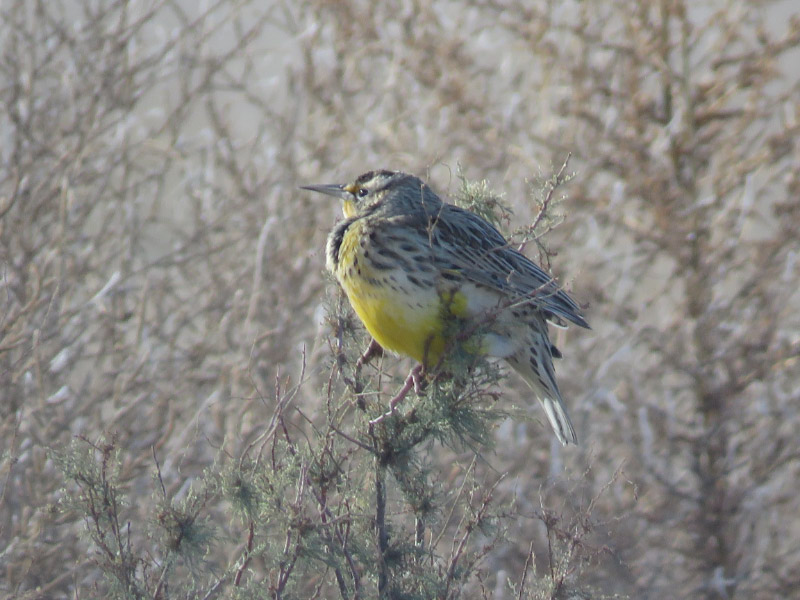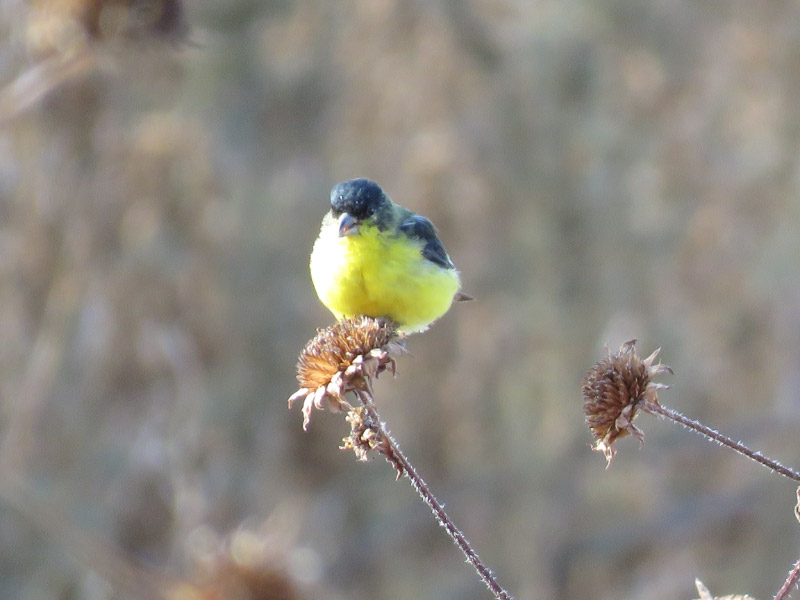Festival of the Cranes – part 11
/After the fly out, we spent the rest of the morning driving slowly around the Bosque del Apache National Wildlife Refuge wildlife loop. We used our car as a blind since it was still cold, and we were seeing quite a lot right along the road. A meadowlark with plumped feathers posed for a portrait.
A coyote crossed the road and continued to follow its nose. We never did see what the animal smelled.
A lesser goldfinch was eating seeds. The refuge leaves a lot of standing seed plants for birds like these.
A pair of white crowned sparrows watched us from a snag.
The sandhill cranes were in the fields – enjoying the bounty of the refuge provides. Historically more of the cranes continued to Mexico but the Bosque’s management program provides reliable food for them through the winter…and the cranes stay.
We found our way back around to the flight deck ponds and got out to watch the birds on the water. We watched the mergansers, other ducks and snow geese. Something startled the snow geese and they all flew away except for one that was struggling in the water. At first, I thought it was somehow stuck in the mud because the bird seemed to be trying to take off. Then it had a muscle spasm and moved its head to point to the sky in an awkward way. Within a minute the bird was still. Later in the afternoon I found out that the bird had probably died of avian cholera. The snow geese on the refuge are plagued by this disease and the refuge managers collect carcasses as quickly as possible to control the infection, but it’s a challenge with the birds being in such proximity to each other on the ponds. There are instances where birds have died in flight.
It was a rather sad end to the drive around the wildlife loop but thought provoking. Refuges are not safe havens from disease and they are limited enough in size that congregations of birds are larger than they might have been before the diversion of the Rio Grande for other uses.
































